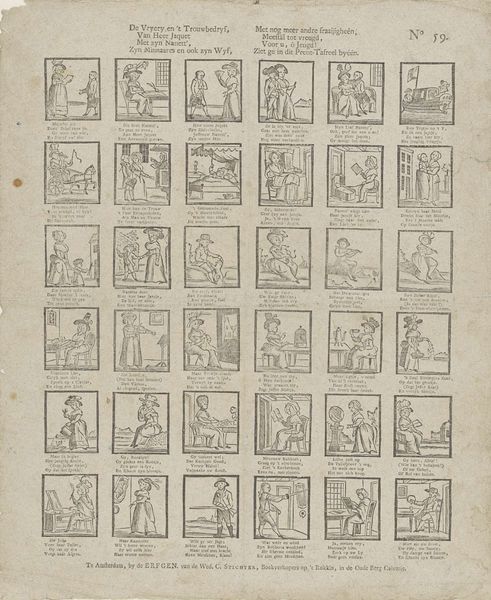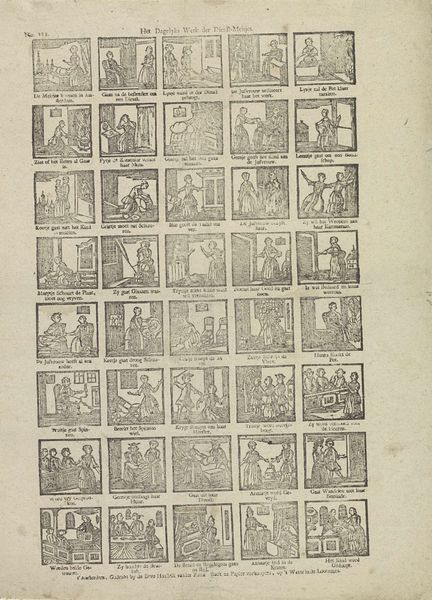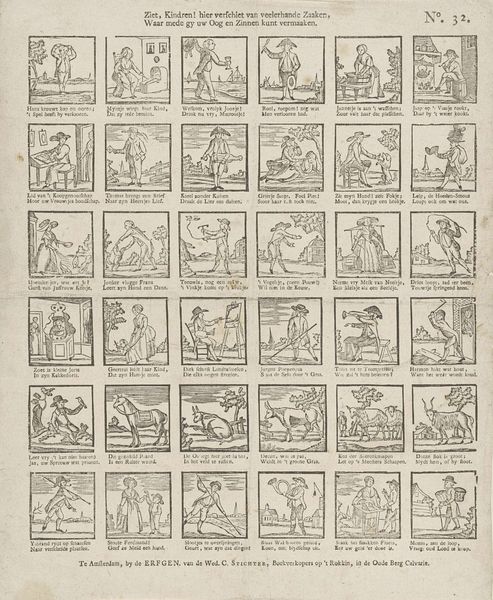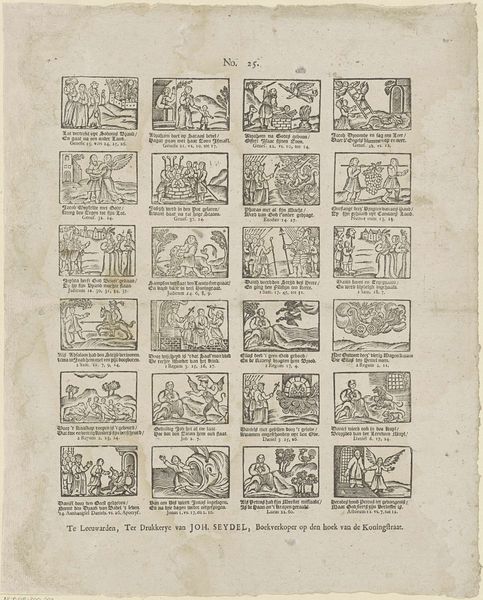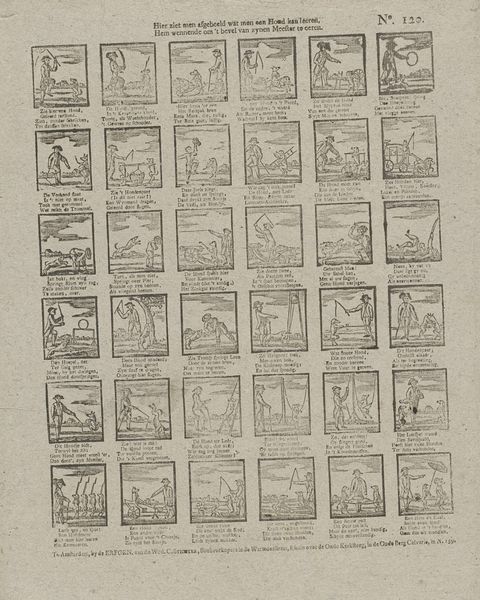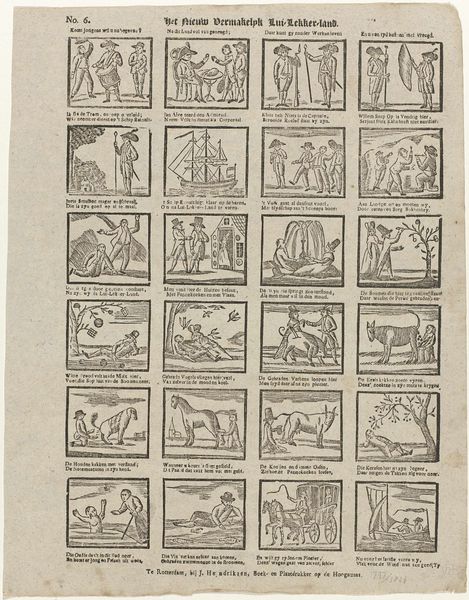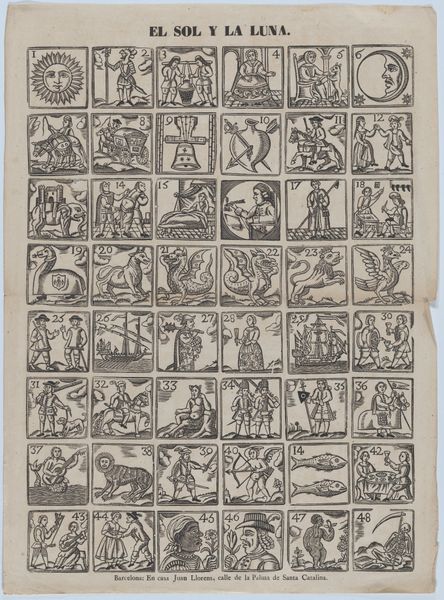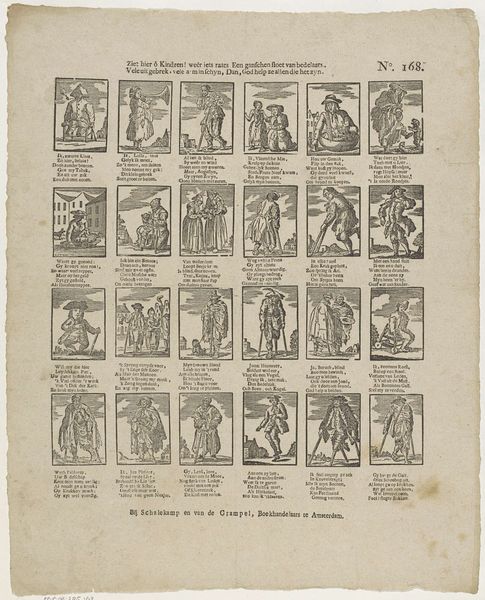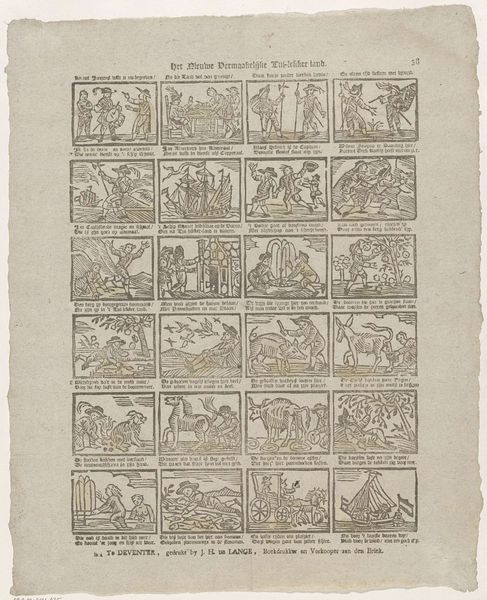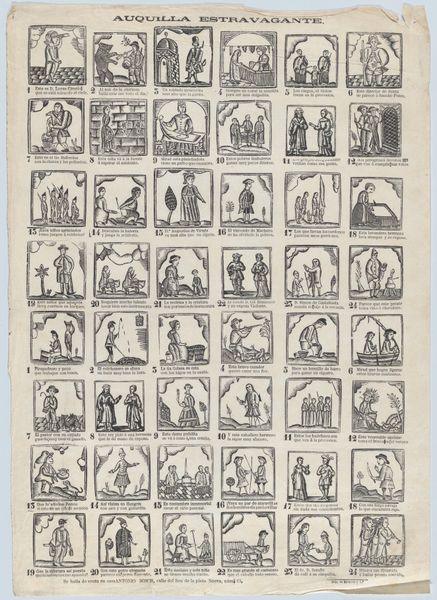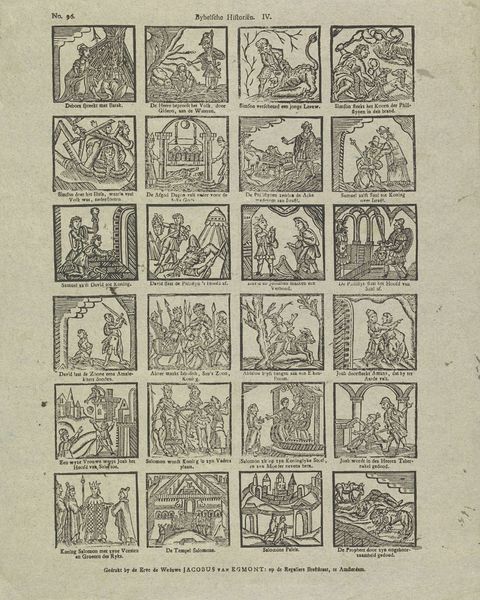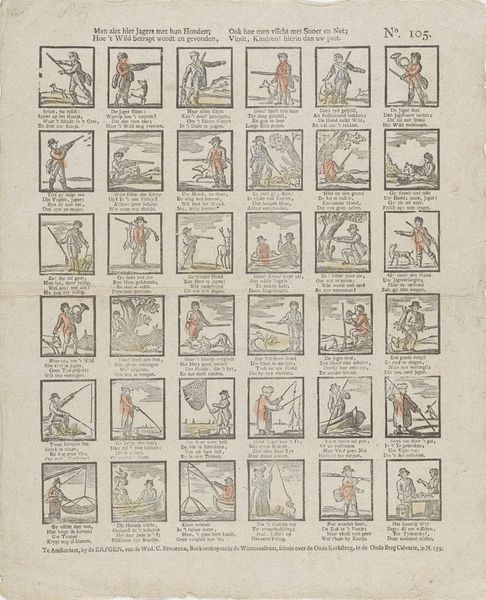
Spreekwoorden, passende op de beelden, die gy ziet / In dit tafreel zyn u tot nut, vergeet ze niet; / Maar prent, ô jeugd! den zin 'er van in uw gedachten, / Gy moogt daar van 't vermaak met lust betrachten 1715 - 1813
0:00
0:00
graphic-art, print, engraving
#
graphic-art
#
narrative-art
#
dutch-golden-age
# print
#
old engraving style
#
genre-painting
#
engraving
Dimensions: height 420 mm, width 347 mm
Copyright: Rijks Museum: Open Domain
Curator: So, we’re looking at “Spreekwoorden, passende op de beelden, die gy ziet," an engraving from the Dutch Golden Age, housed in the Rijksmuseum. There are numerous little vignettes, each illustrating a proverb. What's your initial reaction? Editor: It's visually quite dense, with all those tiny scenes crammed together! It gives me a sense of a world teeming with… well, everyday wisdom, I suppose? How do you interpret this work? Curator: I see a fascinating window into 18th-century Dutch culture, a culture steeped in moralizing tales. These aren’t just amusing scenes; they are encoded lessons on social behavior, meant to instill values and warn against vices. How might the proliferation of proverbs and their visual representation reflect the social and political anxieties of the time? Editor: Anxieties? You mean like, were they trying to control social behavior through these little pictures? Curator: Exactly! Consider the political landscape: The Dutch Republic, a major commercial power, was also grappling with internal class divisions and external pressures. Did these proverbs and their images serve to reinforce a particular social order, perhaps one that benefited the merchant class? And, whose proverbs were being included, and whose were left out? Editor: I hadn't considered that! So it's not just cute little pictures, it's a carefully curated snapshot of who held power and what messages they wanted to send? Curator: Precisely. The very act of selecting and visually representing these proverbs speaks volumes about the dominant ideology of the time. It prompts us to ask: who gets to define "wisdom" and how is that definition used to maintain existing power structures? Editor: Wow, I'm seeing this piece in a totally different light now. It's much more than just a quaint engraving! Curator: Indeed. It's a reminder that art is rarely neutral; it's often deeply intertwined with the social and political currents of its time. We see a history of class encoded here, quite literally.
Comments
No comments
Be the first to comment and join the conversation on the ultimate creative platform.
